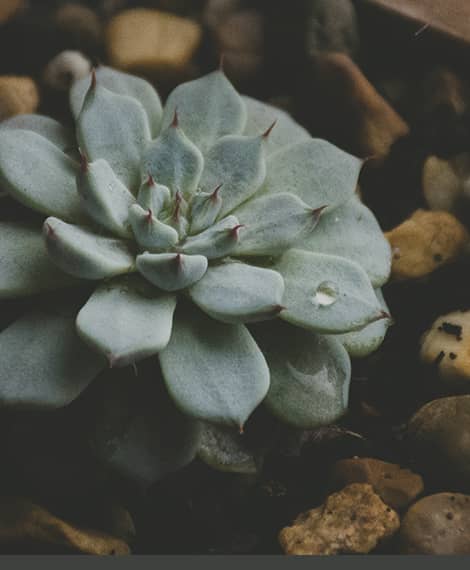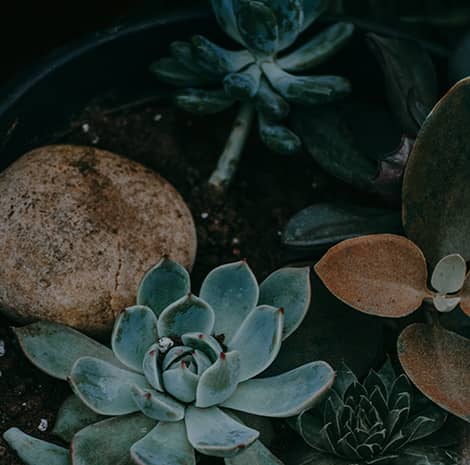
Incense and Resin - Handmade Natural Incense and Aromas
Oct 13th 2021
Burning Incense
A long history of use: Incense is a substance that’s burned to produce a fragrant scent. In fact, the word “incense” is derived from the Latin word for “to burn.” Incense has been around since ancient times — it was used in religious rituals in ancient Egypt, Babylon, and Greece. Over the centuries and into the present day, people throughout the world have used incense for a variety reasons, including as a:component of various religious practices, tool to counteract bad or disagreeable odors, way to repel demons or evil spirits, Read on to learn more about this popular substance.
What is incense made of: Incense is typically made up of an aromatic material that produces a scent and a combustible binding material that holds it together in a particular shape. The aromatic materials used for making incense are typically plant-based and can include a variety of resins, barks, seeds, roots, and flowers. The specific ingredients used in incense can vary by region and manufacturer. Some specific examples of aromatic ingredients that you may recognize include: cinnamon, frankincense, musk, myrrh, patchouli, sandalwood. The combustible binding material found in incense is what ignites, allowing the incense to burn and produce smoke. The materials used vary, but can include things like charcoal or wood powders.
How to burn incense: Incense comes in a variety of forms, including: coils, cones, powders, sticks. In order to burn incense, you first gently ignite it. For example, to burn an incense stick you would use a lighter or a match to light the tip. Once the incense has been ignited, you then gently extinguish the flame, typically by blowing it out. The incense will then glow and begin to produce scented smoke. The burning time of incense varies by its form. For example, a stick of incense may last between 50 and 90 minutesTrusted Source. When the incense is done burning, it’ll extinguish itself. Incense is naturally a fire hazard. According to some incense manufacturers, you should: Use an incense burner or stand when burning incense. This will help contain the burning incense and its ash. Place incense holders on a fire-resistant surface. Never leave burning incense unattended. You can find incense sticks, coils, and holders online.
Incense has been used throughout the world for centuries. There’s limited research on the possible health benefits. Many of the available studies focus on the incense ingredients frankincense and myrrh. Burning incense has long been associated with religious practices and meditation. A compound in frankincense resin that could cause a response similar to an antidepressant. Additionally, a response to this compound was seen in the areas of the brain associated with anxiety and depression. It also activated receptors associated with a feeling of warmth. Compounds purified from frankincense resin.Incense ingredients can have possible health benefits. Incense has been around for a long time and utilized for a variety of purposes, including religious practices, neutralizing foul odors, and comfort. A variety of substances, typically plant-based, give incense its scent. If you do choose to burn incense, be sure to do so safely in order to minimize any fire hazards.
11 Benefits of Burning Sage, How to Get Started, and More: Purifying, Symptom relief, Spirituality, Release negativity, Cleanse or charge objects, Mood booster, Stress relief, Sleep quality, Brain booster, Energy booster, Aromatherapy, Preparation,, 3 smudging techniques, Post-smudge cleanup, Potential risks, Takeaway.
Burning sage — also known as smudging — is an ancient spiritual ritual. Smudging has been well established as a Native American cultural or tribal practice, although it isn’t practiced by all groups. We have the traditions of many Native American peoples to thank for its use. This includes the Lakota, Chumash, Cahuilla, among others. Many other cultures around the world share similar rituals. Read on to learn more about the benefits of burning sage and how you can use it to improve your overall well-being.
1. It may be purifying: The most-used types of sage have antimicrobial properties. This means they keep infectious bacteria, viruses, and fungi at bay. White prairie sage (Artemisia ludoviciana) is both antimicrobial and antibacterial. White sage (Salvia apiana) is also antimicrobial. And both have been shown to repel insects. Beliefs that burning sage clears out spiritual impurities, pathogens, and even insects have been fundamental to the practice of smudging.
2. It may help relieve the symptoms of some conditions. It turns out that sage may help clear the air of lots more than bugs and bacteria. Though scientifically unproven, burning sage is thought to release negative ions. This is said to help neutralize positive ions. Common positive ions are allergens like: pet dander, pollution, dust, mold. If this is the case, burning sage may be a blessing for those with asthma, allergies, bronchitis, and other respiratory conditions. But inhaling the smoke during the smudging can aggravate any respiratory condition. Wait until the smoke clears before going into the room.
3. It can be a spiritual tool: Smudging has long been used to connect to the spiritual realm or enhance intuition. For healers and laypeople in traditional cultures, burning sage is used to achieve a healing state — or to solve or reflect upon spiritual dilemmas. This may have some scientific basis, too. Certain types of sage, including salvia sages and white prairie sage, contain thujone. Research shows that thujone is mildly psychoactive. It’s actually found in many plants used in cultural spiritual rituals to enhance intuition.
4. It may help dispel negative energy: Smudging may also be used as a ritual tool to rid yourself — or your space — of negativity. This includes past traumas, bad experiences, or negative energies from others. This may help you establish a positive environment for meditation or another ritual. Choosing to sit and let go of negative thoughts in a ritual like this sets your intention and dedication to self-improvement. Choosing to engage in ritual can be the beginning of your change in mindset.
5. It can cleanse or empower specific objects: Burning sage creates fragrant smoke central to smudging’s benefits. You can use this incense to smudge yourself or specific spaces. Or according to some sources, you can smudge specific objects. This can be useful with new purchases, gifts, or secondhand items. However, any item can be smudged. If you have any concern with negative history or energy attached to a new or unfamiliar object, smudging may help bring peace of mind and make the object more sacred to you.
6. It may help improve your mood: Tradition suggests that smudging can literally lift one’s spirits to banish negativity. Some research supports this. White prairie sage (also known as estafiate) as an important traditional remedy for treating anxiety, depression, and mood disorders in certain cultures.
7. It may help soothe stress: If burning sage can lift one’s mood, it could also be a great ally against stress. White sage (Salvia apiana) is rich in compounds that activate certain receptors in the brain. These receptors are responsible for elevating mood levels, reducing stress, and even alleviating pain. Fight off inflammation with high-quality, natural ingredients — at a low price. Turmeric Complex provides an affordable way to support your immune system.
8. It may improve the quality of your sleep: Smudging has been traditionally used to safeguard against negativity that could interfere with sleep. Some research suggests that sage contains compounds that could help ease insomnia. Classic garden sage (Salvia officinalis) is sometimes burned like white sage. It’s also been used to improve sleep and soothe anxiety.
9. It may help boost cognition: In addition to dissipating negative energy, improving mood, and strengthening intuition, smudging with sage might improve your memory and focus. Evidence for Salvia’s cognitive-enhancing benefits are promising — perhaps to treat dementia and Alzheimer’s disease.
10. It may help boost your energy levels: Ridding the body, objects, and spaces of bad energy can help welcome in newer, fresher, and more positive energies. In a way, this could have an energizing effect and help with fatigue. Some sagelike species closely related to white prairie sage are also used for smudging. Many have documented antifatigue uses.
11. It can create an uplifting fragrance: For some, this may be the best of all benefits: Sage is a lovely incense with a divine aroma, pure and simple. It also works great as a chemical-free air freshener or odor controller. The practice of burning sage or smudging is fairly simple, with few necessary tools. Basic tools include: a sage bundle (or smudge stick) some recommend a seashell or bowl of ceramic, clay, or glass to hold burning sage or capture ash some recommend matches over a manufactured lighter optional feather or fan for fanning smoke.
There are many types of sage usable for smudging. Traditional examples include: white sage (Salvia apiana), other Salvia species white prairie sage or estafiate (Artemisia ludoviciana) other Artemisia species.
How to prepare for a smudge: Before burning sage, some recommend setting intentions if smudging for spiritual, energetic, and negativity clearing purposes. Remove animals or people from the room. It’s also important to leave a window open before, during, and after smudging. This allows smoke to escape. Some believe smoke also takes impurities and negative energy with it — so don’t skip this step.
How to smudge your living space, an object, and more: These steps apply whether you’re smudging yourself, your home, or an object. You can smudge any of these as often as you’d like. Light the end of a sage bundle with a match. Blow out quickly if it catches on fire. The tips of the leaves should smolder slowly, releasing thick smoke. Direct this smoke around your body and space with one hand while holding the bundle in the other. Allow the incense to linger on the areas of your body or surroundings you’d like to focus on. Using a fan or feather can also help direct the smoke, though this is optional. Allow the ash to collect in a ceramic bowl or shell.
Smudge your home or living space: In this instance, direct sage smoke over all surfaces and spaces in your home or living area. Be thorough. Some recommend working in a clockwise direction around your home, ending back where you started, especially for spiritual purposes. Others recommend counterclockwise. Do what feels best for your situation and follow your intuition.
Smudge an object: Direct smoke around and over the object of your choice. This can be done to a new item, such as jewelry, furniture, or clothing, to protect or dispel it of negative energy. Items related to negative experiences or memories may also be smudged. Some people burn sage over special objects, to acknowledge the object with sacred meaning.
Aromatherapy: You can also light and burn sage to improve odor, fragrance, and mood. Simply waft sage smoke in and around your home. You can place the bundle in a fireproof bowl or burner and allow it to smoke for a while. Make sure your smudge stick is completely extinguished. You can do this by dabbing the lit end into a small bowl of ash or sand. Check the end closely to make sure there are no more embers burning. Once it’s completely put out, store it in a safe, dry place out of the sun. When done correctly and respectfully, smudging is completely safe and the effects last after the smoke clears. Burning sage has many benefits as a spiritual practice. Burning sage is a sacred religious practice in some Native American cultures. Treat the ritual with respect.







